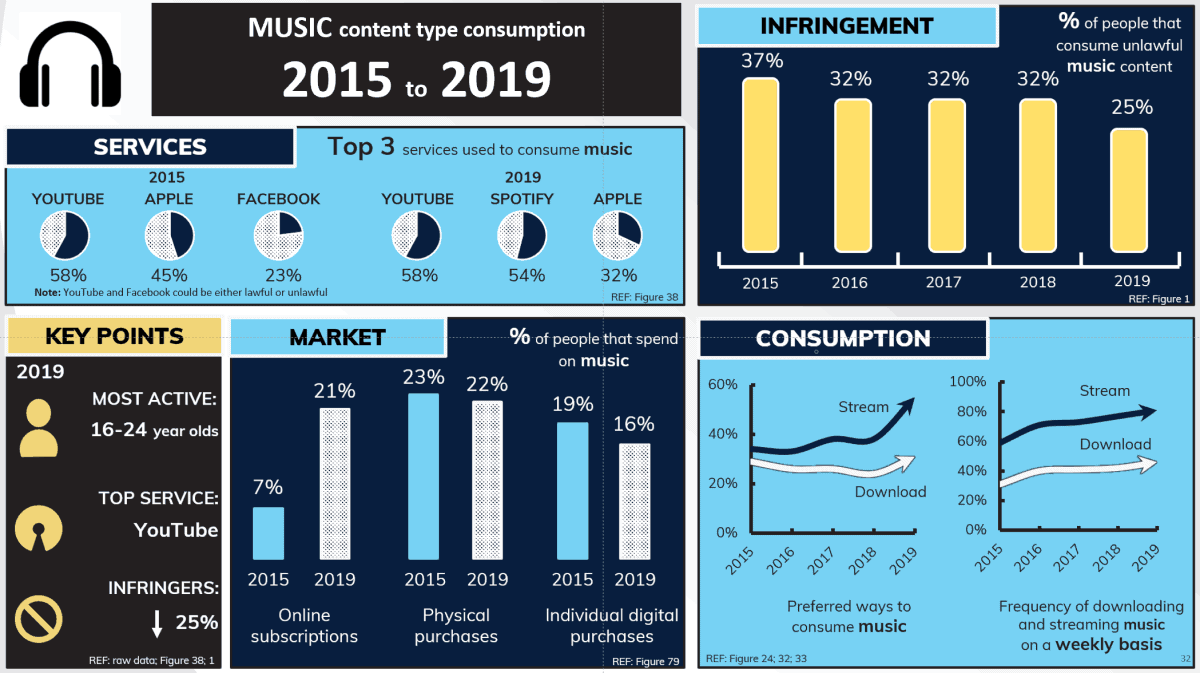
Music piracy is declining in Australia according to a recent survey conducted by the Australian Government’s Department of Communications and the Arts. The survey conducted in March 2019 was the fifth consumer survey of online copyright infringement amongst Australians aged 12+ which asked respondents about their consumption of all types of online content. The results show that consumption continues to grow and ‘online copyright infringement continues to trend down’.
The four key objectives stated for the research were, ‘Firstly, to understand the prevalence of online copyright infringement in Australia across five content types: music, video games, movies, TV programs and, new to 2019, sport. Second, to understand what attitudes drive online copyright infringement behaviours. Third, to determine the role pricing plays in lawful and unlawful access of online content and finally, to understand how online user behaviour and attitude has changed since the survey first began in 2015 and the emerging trends over the past five years.’
Key survey findings
- Australians are downloading, streaming and sharing more content than ever before across digital music, video games, movies and TV programmes
- Consumer confidence has grown in knowing what ‘s lawful and unlawful content online and the number of respondents who consume unlawful content has decreased significantly since 2015
- Consumers are less motivated in accessing unlawful content than they were in 2015, however the inability to afford lawful content remains a barrier
- Australian consumers are also now less likely to illegally access content that is not yet available to them at the same time as the rest of the world
- When encountering a blocked site with illegal content, a majority of consumers did not continue to try and access to content
- Subscriptions to online streaming providers, like Netflix, have become the dominant means of accessing digital content for TV programmes and movies
- 16% of respondents stream podcasts and 8% downloaded them in 2019
- 54% of infringers were male. Infringers were most likely to be aged between 25-34 (22%), 35-44 (20%), 16-24 and 45-54 (18% each). Both the 12-15 age bracket and 55 years and older were 11% each.
The full report (111pp) can be freely downloaded in either PDF or DOC format here.




